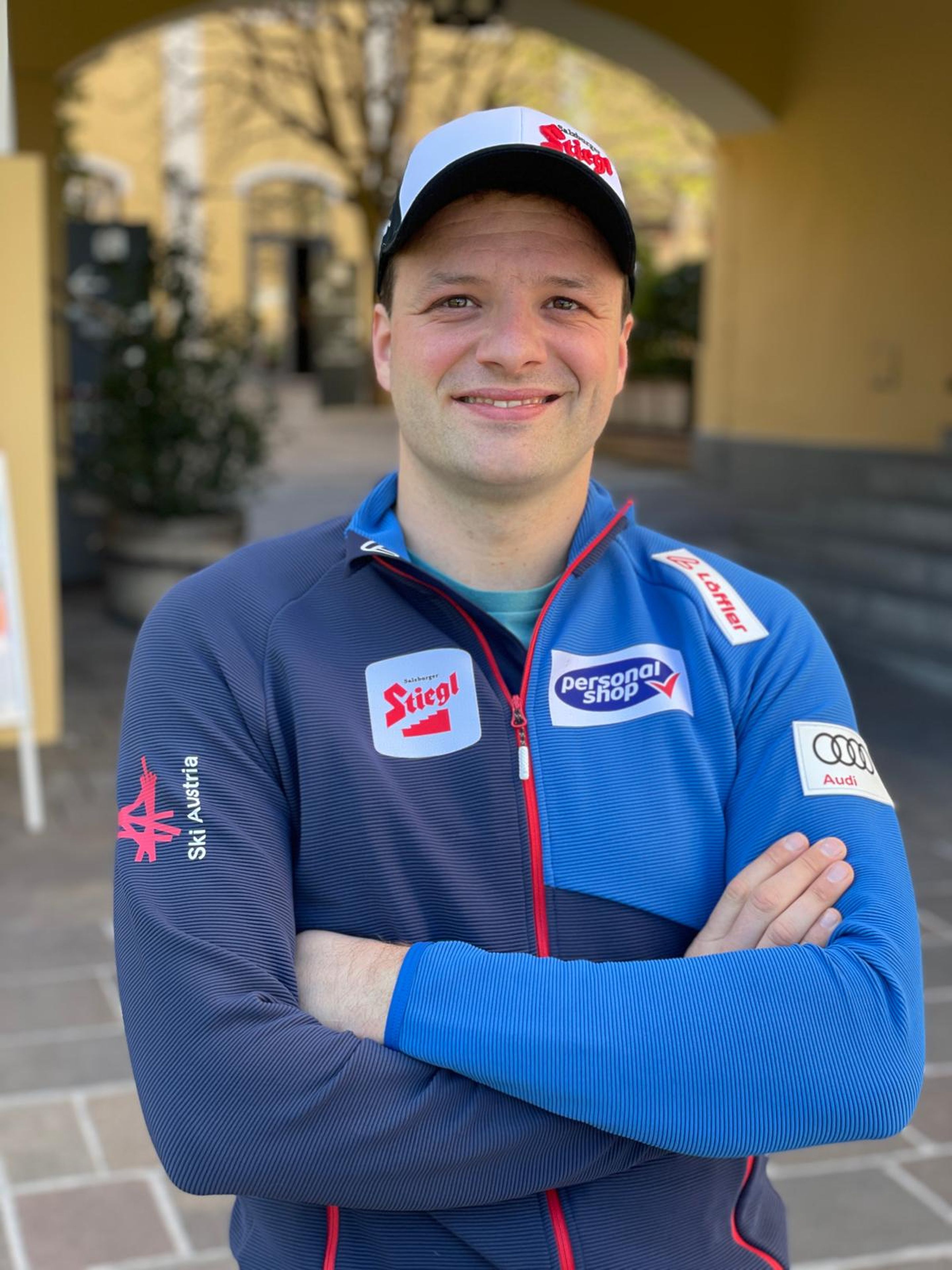“A unique mix of experience and talent” – Schabereiter excited to lead Austria’s Women
May 20, 2025·Nordic Combined)
With the 2025/26 season on the horizon, a fresh yet familiar face takes the helm of Austria’s women’s Nordic Combined team. Florian Schabereiter, a 34-year-old Styrian and seasoned coach within the Austrian Ski Federation, has been appointed head coach, succeeding Willi Denifl following his retirement after the World Cup final in Oslo.
Schabereiter is no stranger to elite sport. A former ski jumper himself until the age of 20, he transitioned into a role as a service technician for the Austrian national team before moving into coaching. Between 2013 and 2019, he served as an assistant coach for both the men’s and women’s ski jumping teams before bringing his expertise to the Youth High-Performance Center in Styria. Now, the trained sports scientist returns to the World Cup circuit, ready to shape the next chapter of women's Nordic Combined in Austria.

Congratulations on your new role! You’ve gathered experience in both the Ski Jumping and Nordic Combined world over the years. How do you think your background as a former athlete, sport scientist, and coach has prepared you for this position?
Thank you very much for the congratulations!
My long-standing experience in various roles—as an athlete, sports scientist, and coach—has given me a well-rounded understanding of the many demands of elite sport. As an athlete, I learned what it means to push yourself both physically and mentally every day, and how to handle both success and setbacks. As a coach, it’s especially important to be able to empathize with the athlete’s perspective. The academic side of my background allows me to analyze sporting processes and make evidence-based decisions. In my coaching role, I apply both my theoretical knowledge and hands-on experience, always tailoring my approach to support each athlete individually. This combination of practical experience, scientific understanding, and strategic thinking forms a strong foundation for my new responsibilities as head coach.
You’re stepping into big shoes after Willi Denifl’s impactful tenure. What are your main goals for the coming season, and in which areas would you like to build upon the foundation he laid?
Willi Denifl did outstanding work and provided important momentum for the team. I want to build on that foundation and further develop it. While strengthening our top-level athletes, we also need to expand our base at the youth level. For me, individuality is key—so my main focus is on advancing the personal performance development of each athlete.
A leadership change also presents opportunities to bring in new energy. One of my strengths lies in communication—both with the athletes and within our support team. I also aim to foster even stronger interdisciplinary collaboration between teams and training centers to maximize our overall development.
Can you give us some insight into your first few weeks in this new role? What has your day-to-day looked like so far, and what have been your first priorities?
The first few weeks have been intense and characterized by open dialogue. My priority has been to gain a thorough overview of the situation. That means holding a lot of conversations—with athletes, coaches, and federation officials alike. Building trust and identifying both needs and potential within the team have been top priorities from day one. At the same time, I’ve been deeply involved in coordinating with colleagues to plan for the upcoming season.

Women’s Nordic Combined is growing rapidly, but it's still not included in the 2026 Olympic program. How do you keep the athletes motivated despite this disappointment?
I witnessed a similar journey with the women’s ski jumping team—it wasn’t an easy path, but today they are an integral part of the Olympic program. Of course, every Nordic Combined athlete would love to compete for Olympic medals in the next season, and it’s frustrating that this won’t be the case in 2026. Still, I don’t see it as a setback.
The sport has made incredible progress in a short time—the establishment of a World Cup series speaks volumes about its potential. Day-to-day, it’s about focusing on the opportunities. Our athletes are shaping the future of this discipline. That comes with responsibility, but more importantly, it’s a powerful source of motivation. Those who stick with it now are true pioneers.
The past season marked a big step forward for the women’s field—not only with the first large hill World Cup in Oslo but also with standout performances by Lisa Hirner and Annalena Slamik. How do you assess the current level of the team and its potential?
The large hill World Cup in Oslo sent a strong message about the evolution of the discipline. The performances of our athletes clearly show the strength and promise of our team. The current level is already very good, but we still have untapped potential. Our goal is to unlock that potential and continue developing each athlete’s performance step by step.
You’re taking over a team full of momentum—Lisa Hirner’s World Championship medals, Claudia Purker’s personal bests, and the rise of young athletes like Anna Gredler. How do you plan to support both established names and up-and-coming talent for long-term success?
We have an exciting mix of experienced athletes and rising young talents, which offers tremendous developmental opportunities—but it also requires very targeted management. It’s essential to offer each athlete an individualized path while strengthening the team’s collective identity.
Young athletes must be gradually integrated into the high-performance system without being overwhelmed. The key lies in close collaboration between youth and elite programs. Every member of the support staff has a crucial role to play, ensuring that all the small pieces of the system fit together seamlessly. This creates a stable environment where individual growth can flourish. I’m convinced that this is the path to sustainable success—and we are highly motivated to pursue it.




